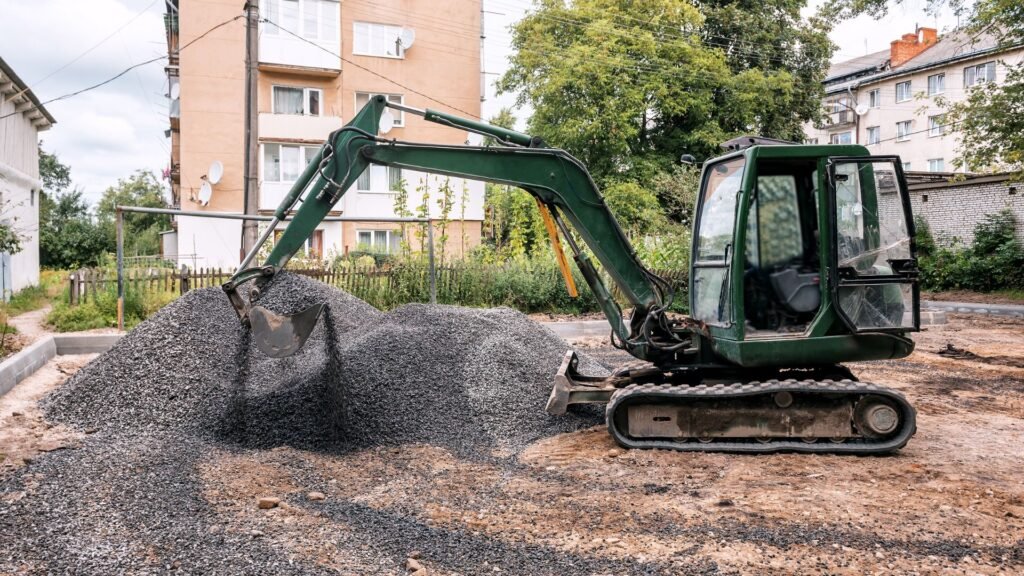Welcome to your beginner’s guide on how to drive a mini digger in New Zealand! Whether you’re planning a DIY project, landscaping your property, or just want to understand the basics of operating this versatile machine, you’re in the right place. Mini diggers, also known as compact excavators, are widely used across New Zealand for everything from construction to farm maintenance due to their efficiency and maneuverability. In this guide, we’ll walk you through everything you need to know—from legal requirements and safety tips to a step-by-step tutorial on how to operate one, all tailored specifically to New Zealand conditions. Whether you’re renting a mini digger for the weekend or looking to improve your skills, we’ve got you covered. Let’s dig in!
To drive a mini digger in New Zealand, start by familiarizing yourself with the controls, including the joysticks for operating the boom and bucket, and the pedals for moving the tracks. Always follow legal guidelines, including any licensing or training requirements, and prioritize safety by performing pre-operation checks. When maneuvering the digger, use gentle movements for precise control, especially in tight spaces. Remember to consult New Zealand’s WorkSafe guidelines and consider renting from a reputable company to ensure a smooth experience.
- Understanding The Basics Of A Mini Digger
- Legal Requirements In New Zealand For Driving A Mini Digger
- Step-By-Step Guide To Driving A Mini Digger
- Safety Tips For Driving A Mini Digger In New Zealand
- Tips For Renting A Mini Digger In New Zealand
- Common Mistakes Beginners Make And How To Avoid Them
- Alternatives To Driving A Mini Digger Yourself
- FAQs: About How To Drive A Mini Digger NZ
- Do I need a license to drive a mini digger in New Zealand?
- What are the basic steps to drive a mini digger?
- Can I rent a mini digger in New Zealand, and how much does it cost?
- What safety precautions should I take when operating a mini digger?
- What is the best way to dig with a mini digger?
- How can I ensure I’m operating the mini digger legally in NZ?
- What are common mistakes beginners make with mini diggers?
- Can I use a mini digger on any type of terrain?
- What should I look for when renting a mini digger in New Zealand?
- Is it better to hire a professional operator or drive a mini digger myself?
- Conclusion
- 09 886 4955
Understanding The Basics Of A Mini Digger
A mini digger, often referred to as a mini excavator, is a versatile piece of machinery widely utilized across various sectors, notably in New Zealand’s bustling construction and landscaping scenes. These compact yet powerful tools are engineered to perform a myriad of tasks typically associated with their larger counterparts but are uniquely suited for spaces where larger excavators cannot access due to their size. This section delves into what a mini digger is, explores the different types available in New Zealand, and unpacks the essential components of these dynamic machines.
What is a Mini Digger?
A mini digger is essentially a scaled-down version of an excavator, designed for its ability to operate in tight spaces and its ease of maneuverability. In New Zealand, where urban and residential spaces can be compact, the mini digger’s small footprint and precise control come in handy. These machines are particularly effective for smaller projects that require the finesse of a professional-grade tool without the bulk and extensive operating space that larger machinery demands. The efficiency of mini diggers is not just in size but also in their capability to perform tasks like digging trenches, demolishing small structures, and landscaping with precision and ease.
Types of Mini Diggers Available in New Zealand
In the New Zealand market, mini diggers come in various models to cater to different construction and landscaping needs. Leading brands such as Caterpillar and Kubota are popular choices, known for their reliability and advanced technology. These brands offer models that vary in size, engine power, and additional features, making them adaptable to both mild and more demanding projects. Rental options are abundant, allowing individuals and companies to choose a digger that fits their specific project requirements without the commitment of purchase. When selecting a mini digger, it’s important to consider the nature of the project. For instance, some diggers are better suited for urban renovations or installations due to their compact design, while others might be favored for rural landscaping projects because of their robustness and terrain versatility.
The Components of a Mini Digger
Understanding the fundamental components of a mini digger can significantly enhance operational efficiency, especially for beginners. The main parts include:
- Tracks/Wheels: Provide mobility and stability, allowing the digger to navigate various terrains.
- Boom: The adjustable arm that extends and contracts to manipulate the digging depth and reach.
- Bucket: Attached to the boom, this component does the heavy lifting, digging, and scooping.
- Cab: Where the operator sits and controls the digger, equipped with essential controls and safety features.
- Controls: Typically consist of joysticks, pedals, and switches used to operate the boom, bucket, and navigate the machine.
For those renting mini diggers in New Zealand, rental companies often provide basic manuals that guide the users on safe operation and maintenance practices, ensuring even beginners can operate the machinery with confidence.
By comprehensively understanding the basics, types, and components of mini diggers, prospective users in New Zealand can make informed decisions, ensuring they choose the right equipment that matches their specific project needs. This knowledge not only enhances operational efficiency but also contributes to project success and safety compliance.
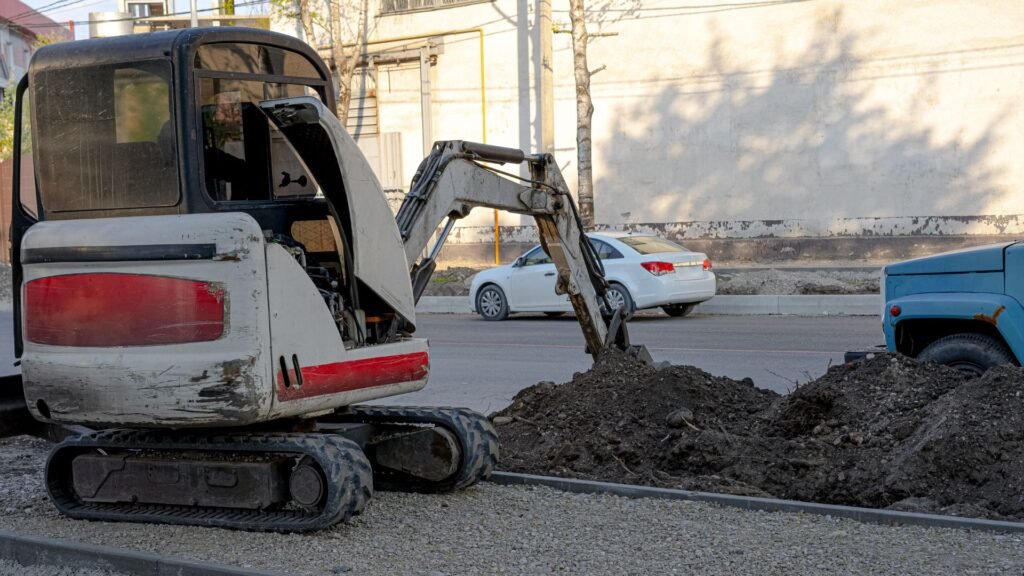
Legal Requirements In New Zealand For Driving A Mini Digger
Driving a mini digger in New Zealand involves adhering to specific legal standards and regulations to ensure safety and compliance. Whether you’re a homeowner looking to do some backyard renovations or a professional in the construction industry, understanding these requirements is essential. Here’s what you need to know:
Do You Need a License?
In New Zealand, the legalities surrounding the operation of a mini digger vary depending on the digger’s size and the nature of its use. Generally, for smaller mini diggers, you do not require a formal license if you are using the machinery on private property for personal projects. However, the scenario changes when it comes to professional use.
For commercial operations, operators often need specific training and certifications to comply with the Health and Safety at Work Act (HSW Act). This legislation ensures that all machinery operators are competent and can handle equipment safely to prevent workplace accidents. Particularly, operators should seek to gain endorsements for wheels, tracks, or rollers, which are critical for those operating heavier or more complex machinery. These endorsements are classed under the National Certificate in Earthworks, which provides comprehensive training on safely operating earthmoving equipment like mini diggers.
Understanding WorkSafe NZ Guidelines
WorkSafe New Zealand sets forth guidelines that are designed to protect operators and bystanders. Key safety regulations include proper training, regular maintenance checks, and the correct usage of personal protective equipment (PPE). WorkSafe NZ emphasizes the importance of understanding how to operate heavy machinery, and they offer resources and guidelines to help ensure operators are well-informed.
The guidance provided by WorkSafe NZ also highlights the necessity of being insured, especially if you are renting or hiring equipment. Insurance not only protects against potential damage or accidents but also ensures compliance with local laws. If you’re unsure of your ability to operate a mini digger safely, or if you do not have the necessary endorsements, it’s recommended to hire a licensed operator. This not only mitigates risk but also aligns with WorkSafe NZ’s recommendations for safety and compliance in handling heavy machinery.
By adhering to these standards and understanding the legal requirements, operators can ensure safe and efficient use of mini diggers in various settings. Whether for personal projects or professional engagements, compliance with these regulations is not just about following the law—it’s about ensuring the safety of all individuals involved.
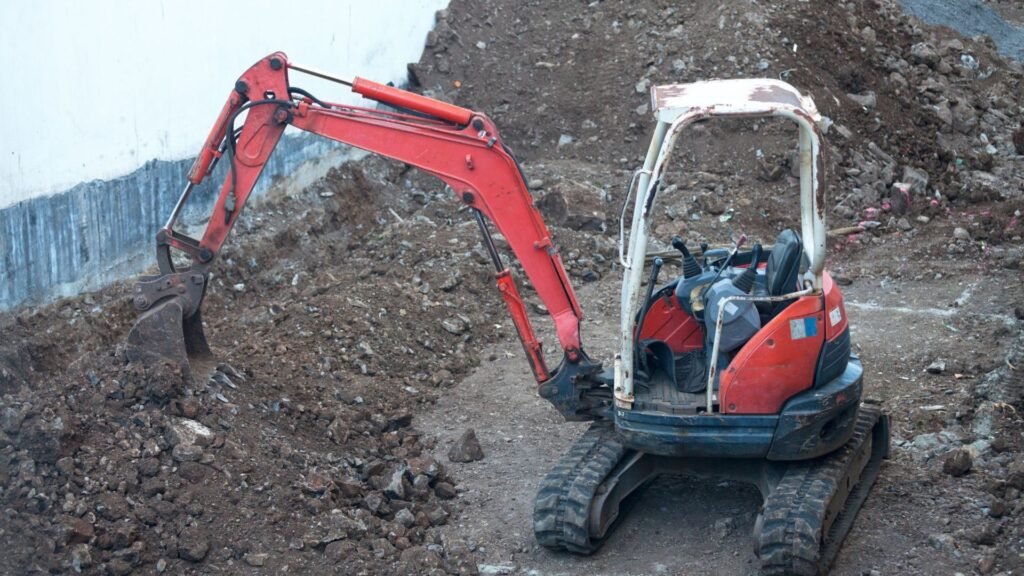
Step-By-Step Guide To Driving A Mini Digger
Driving a mini digger might seem daunting at first, but with a structured guide and some practice, you’ll find it both manageable and rewarding. Whether you’re preparing to tackle a project in a residential area or on a commercial site, understanding how to operate a mini digger efficiently and safely is crucial. This section provides a detailed step-by-step guide to help you become proficient in using a mini digger, with specific attention to common conditions found in New Zealand.
Step 1: Getting Familiar with the Controls
Before you begin operating a mini digger, it’s essential to familiarize yourself with its controls. This will not only enhance safety but also improve your efficiency on the job.
- Joystick: The joystick controls the arm movements of the digger, including the extension, retraction, and the angle of the digger arm. A gentle push or pull will move the arm in the desired direction.
- Pedals: Foot pedals typically manage the movement of the digger itself. One pedal will move the digger forward, while the other will reverse its direction.
- Levers: These are used for finer control over the digger’s attachments, like the bucket or scoop. Each lever has a specific function, so it’s crucial to refer to your operator’s manual for detailed instructions.
Starting the Digger: To start the digger, ensure that the area is clear of obstructions and bystanders. Turn the ignition key while making sure all controls are in the neutral position. Always perform a pre-operation check to ensure all systems are go.
Step 2: Basic Movements
Understanding the basic movements will help you maneuver the mini digger with confidence.
- Driving Forward and Backward: Use the pedals to move the digger. Practice in an open area to get a feel for the sensitivity of the pedals.
- Turning on Tracks or Wheels: Mini diggers typically turn by operating the tracks independently. To turn, slow one track while accelerating the other.
- Using the Boom and Bucket: For simple tasks like picking up or dumping materials, use the joystick to control the boom and bucket. Practice these movements slowly and steadily to avoid sudden drops or spills.
Step 3: Digging Techniques
Digging is where your understanding of the mini digger’s controls is put to the test. Here are basic techniques for typical digging tasks:
- Trenching: To dig a trench, position the digger perpendicular to the trench line and use the boom to scoop out the dirt. Make sure to deposit the soil far enough away from the edge of the trench to prevent collapses.
- Scooping and Leveling: Use the bucket to scoop up dirt or gravel. For leveling, keep the bucket low and move forward slowly to spread the material evenly across the surface.
Step 4: Maneuvering in Tight Spaces
In New Zealand, especially in residential areas, you may often find yourself operating in tight spaces.
- Operating in Small Areas: Always keep the mini digger’s movements minimal and precise. Use mirrors and cameras, if available, to keep an eye on the surroundings.
- Handling Uneven Terrain and Slopes: When working on slopes, move up and down rather than across to minimize the risk of tipping. Adjust the bucket so it can act as a stabilizer if needed.
Understanding these basic steps will not only make your mini digger operation safer but also more efficient. Whether you’re working on landscaping, construction, or small-scale excavation, this guide will ensure you have the necessary skills and knowledge to operate a mini digger effectively.
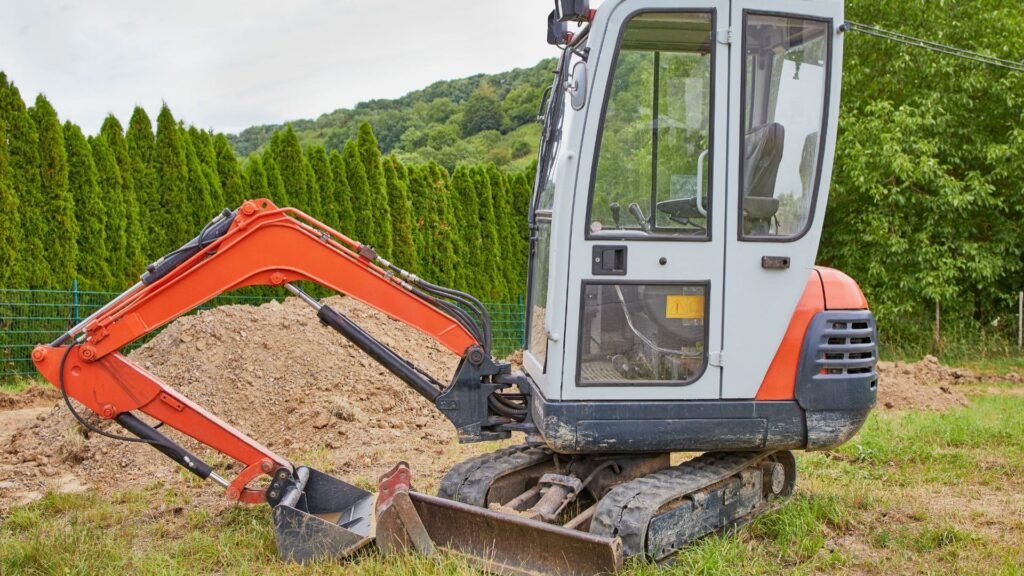
Safety Tips For Driving A Mini Digger In New Zealand
When it comes to operating a mini digger, safety should always be a top priority, especially in New Zealand where terrain and weather conditions can pose additional challenges. This section provides essential tips to ensure both operator safety and the efficient use of the equipment.
Pre-Operation Safety Checks
Before you even turn the key in a mini digger, conducting thorough pre-operation safety checks is crucial. Start by examining the mini digger’s essential fluids: oil and fuel levels need to be checked and topped up if necessary to ensure the machine operates smoothly without risking damage. Equally important is the condition of tires or tracks—depending on the type of mini digger you are operating. Look for any signs of wear or damage that could impair functionality or safety.
In addition to these checks, personal protective equipment (PPE) cannot be overlooked. Operators should be outfitted in high-visibility vests to ensure they are seen by others on site, and steel-toe boots to protect feet from heavy objects or accidental impacts.
Operating Safely on Different Terrains
Mini diggers are often used in varied terrains, and in New Zealand, you might find yourself navigating particularly challenging environments like slopes, or muddy and wet surfaces—common occurrences in the country’s rainy regions. When driving on slopes, keep the heavy end of the mini digger uphill and move slowly to prevent tip-overs. On muddy or wet surfaces, enhance your traction by using tracks if available and proceed with caution to avoid sliding.
Tip-overs are a serious risk with improper handling. Always be aware of the machine’s center of gravity and adjust your load and speed to maintain stability.
Understanding Weight Limits and Balance
Overloading a mini digger can be a recipe for disaster. It’s essential to understand and adhere to the specified weight limits of your mini digger. Overloading not only strains the machine but also significantly increases the risk of tipping. When transporting heavy loads, keep the load low to the ground to maintain balance, and move slowly to prevent sudden shifts in weight that could lead to loss of control.
General Safety Reminders
Safety on the job site extends beyond the operator. Ensure that all bystanders and co-workers are at a safe distance when operating the mini digger. Use barriers or signs if necessary to keep the area clear.
Clear communication is also pivotal. Whether it’s signaling to co-workers through hand signals or using radios for communication, ensuring everyone on the site is aware of your actions reduces the risk of accidents.
By adhering to these safety practices, operators can not only ensure their safety but also enhance the operational efficiency of the mini digger. Remember, safety is not just a regulation—it’s your first defense against workplace accidents.
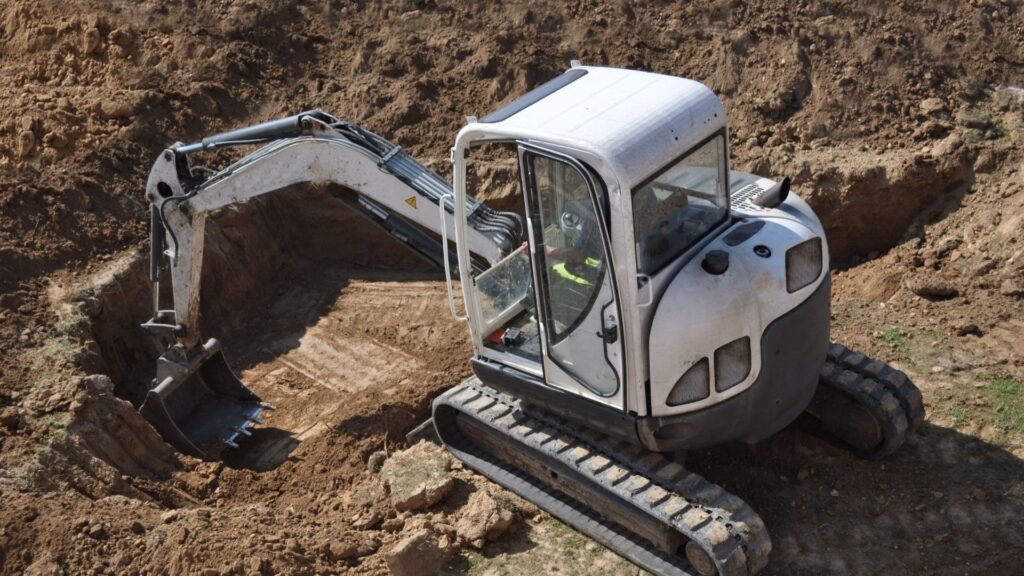
Tips For Renting A Mini Digger In New Zealand
Renting a mini digger in New Zealand can significantly ease the burdens of both small and large-scale projects, whether you’re planning a landscaping endeavor, laying pipes, or preparing a building site. This section will guide you through choosing the right rental company, understanding cost implications, and navigating rental agreements effectively.
Where to Rent Mini Diggers in NZ
When looking to rent a mini digger, New Zealand offers several reputable companies, such as Hirepool and Kennards Hire, which are known for their reliable equipment and excellent customer service. These companies provide a wide range of diggers, from compact models suitable for tight spaces to more robust versions designed for heavy-duty digging.
Choosing the Right Rental for Your Project:
Selecting the appropriate mini digger depends largely on the specifics of your project. Consider the following factors:
- Size of the digger: Match the size and power of the digger to the scale of your project to ensure efficiency.
- Accessibility of your site: If working in a confined area, a smaller, more maneuverable digger might be necessary.
- Depth of excavation needed: Ensure the digger’s specifications meet the depth requirements of your digging project.
Cost of Renting a Mini Digger in NZ
The cost of renting a mini digger can vary based on the size of the machine and the duration of the rental. Prices typically are structured as follows:
- Daily rates are convenient for short-term projects expected to last a few days.
- Weekly rates are discounted compared to daily pricing and are suitable for mid-length projects.
- Monthly rates offer the best value for long-term needs.
Budgeting for Additional Expenses:
When renting a mini digger, additional costs can include:
- Fuel: Mini diggers run on diesel; budgeting for fuel consumption based on the size of the digger and operating hours is crucial.
- Delivery and pickup fees: Some companies charge extra for these services.
- Operating supplies: Depending on the digger model, additional lubricants or hydraulic fluids might be necessary.
Understanding Rental Agreements
Before you sign a rental agreement for a mini digger, it is vital to understand all terms and conditions to avoid unexpected liabilities. Here are key aspects to look out for:
- Insurance: Check whether the rental price includes insurance and what it covers. You may need additional coverage for certain risks.
- Responsibility for damages: Understand your liabilities in case of damage to the machine or property during the rental period.
- Maintenance obligations: Regular maintenance might be covered by the rental company, but always verify this.
Key Questions to Ask the Rental Company
- What happens if the digger breaks down?
- Are there any restrictions on usage or areas where the digger cannot be operated?
- What are the terms for extending the rental period?
By thoroughly researching and planning your mini digger rental in New Zealand, you can ensure that your project runs smoothly without any unwelcome surprises. Always compare offerings from different companies and choose one that aligns best with your project needs and budget constraints.
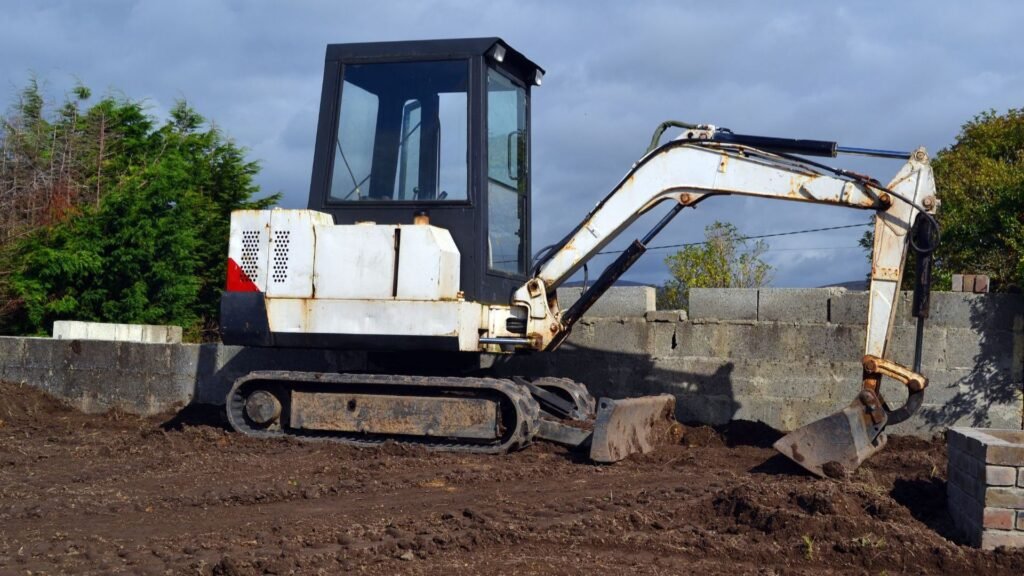
Common Mistakes Beginners Make And How To Avoid Them
Navigating the early stages of any new skill or hobby can be fraught with potential pitfalls. This is especially true for beginners operating mini diggers, where inexperience can lead to costly and dangerous mistakes. Understanding these common errors and learning how to sidestep them is crucial for ensuring safety and efficiency. Here, we explore several frequent missteps made by novices and provide practical advice on how to avoid them.
Overconfidence
It’s easy to feel a surge of confidence after getting a few hours of digger operation under your belt. However, this newfound confidence can sometimes lead one to overestimate their capabilities. The primary risk here is that beginners might take on tasks that are beyond their current skill level, potentially leading to accidents or mishandling of the machinery.
To combat this, it’s vital to adopt a mindset geared towards continuous learning and caution. No matter how comfortable you feel, always approach each new task with vigilance and respect for the machinery’s power. Engaging in regular training sessions and taking the time to learn from experienced operators can help temper overconfidence with knowledge and practical skills.
Not Planning the Digging Area
One critical oversight often made by beginners is failing to properly plan and map out the digging area. This step is about more than just deciding where to dig; it involves understanding what lies beneath the surface. Striking underground utilities such as water pipes, gas lines, or electrical cables can lead to severe consequences, including service disruptions, costly repairs, and serious safety hazards.
In New Zealand, for instance, the free “beforeUdig” service offers a vital resource, providing information on the location of underground cables and pipes. Utilizing such services helps you create a comprehensive plan that avoids these utilities, ensuring a safer digging process. Always take the time to do your due diligence before breaking ground to prevent these dangerous and expensive mistakes.
Ignoring the Weight Distribution
Handling a mini digger involves more than just maneuvering the machine around a site. Beginners must also understand how to manage the mini digger’s center of gravity, particularly when transporting or lifting heavy loads. Improper weight distribution can lead to tipping, which is dangerous for both the operator and other workers on site.
To ensure safe operation, always check the load capacity of your digger and understand how weight shifts affect the stability of the machine. Practice loading and unloading in controlled environments before attempting it in more complex settings. Additionally, always ensure loads are secure and balanced before moving the digger, and avoid abrupt turns or movements that could shift the load unexpectedly.
Final Thoughts
Avoiding these common mistakes involves a combination of proper planning, respect for the machinery, and a commitment to ongoing education. By recognizing these pitfalls and actively working to prevent them, beginners can significantly improve their operational safety and effectiveness. Whether you’re undertaking a small project or managing a major construction task, these principles will guide you toward more successful and safe digger operation.

Alternatives To Driving A Mini Digger Yourself
When tackling projects that involve digging and excavation, you might be contemplating whether to operate a mini digger yourself or seek alternative methods. This section explores why, in certain cases, it may be more prudent or cost-effective to consider other options besides personally driving a mini digger.
Hiring a Professional Operator
One significant alternative is to hire a professional operator. Here’s why this might be the right choice:
- Safety and Efficiency: Professional operators bring expertise and experience to your project. They are trained to handle complex machinery safely and efficiently, minimizing the risk of accidents and damage to your property. The peace of mind that comes with knowing your project is in expert hands is invaluable.
- Cost-Effectiveness: While hiring a professional may seem like an additional expense, it can actually be cost-effective. Professionals can complete jobs faster and more efficiently due to their expertise, potentially saving money on rental time and avoiding costly mistakes. In New Zealand, the average rates for hiring a mini digger operator can vary, but typically range from NZD 50 to NZD 70 per hour. This rate is often justified by the speed and quality of work, making it a worthy consideration for larger or more complex projects.
Using Smaller Tools for Simple Projects
For smaller-scale or simpler projects, there are practical alternatives that might suit your needs better than a mini digger:
- Powered Wheelbarrows and Mini Loaders: These smaller tools are perfect for minor jobs and can often be operated by the homeowner. A powered wheelbarrow, for instance, can transport materials across your site with ease, while a mini loader can handle light digging and lifting without the need for extensive machinery.
- Manual Labor: For the smallest projects, sometimes traditional manual labor is the best choice. This can include using hand tools such as shovels and pickaxes.
Pros and Cons:
- Pros: Opting for manual labor or smaller machinery can significantly reduce rental costs and is often sufficient for minor tasks. These methods are also less likely to disrupt your site and can be easier to manage.
- Cons: Manual labor is more time-consuming and physically demanding. Smaller tools, while less expensive, might not be suitable for all types of soil or more challenging excavation tasks.
In conclusion, whether you choose to hire a professional operator, utilize smaller machinery, or stick to manual labor depends greatly on the scope and scale of your project. Assessing the complexity of the job, the type of soil, and your personal capacity for physical labor will help you make an informed decision that ensures safety, efficiency, and cost-effectiveness.
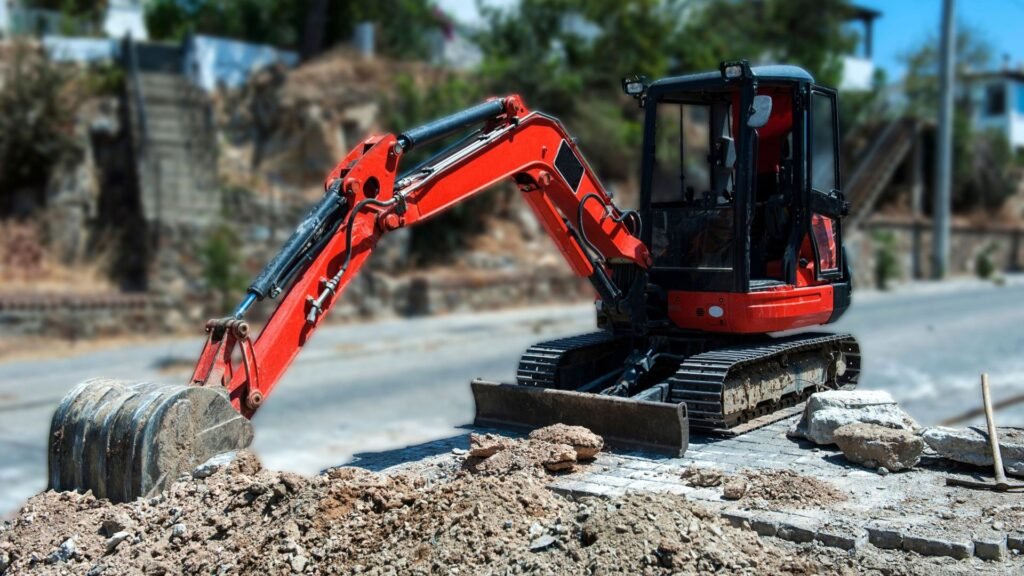
FAQs: About How To Drive A Mini Digger NZ
Do I need a license to drive a mini digger in New Zealand?
In New Zealand, you generally don't need a specific license for driving a mini digger on private property. However, if you're operating it in a professional capacity or on a public road, you may need a relevant endorsement on your driver’s license and must follow WorkSafe regulations.
What are the basic steps to drive a mini digger?
First, familiarize yourself with the controls, including joysticks, pedals, and levers. Start the engine, practice moving forward and backward, and experiment with turning. Then, use the boom and bucket to dig and lift, keeping safety in mind at all times.
Can I rent a mini digger in New Zealand, and how much does it cost?
Yes, mini diggers are available for rent from companies like Hirepool or Kennards Hire. Costs typically range from NZD 150 to NZD 300 per day, depending on the size of the machine and rental duration.
What safety precautions should I take when operating a mini digger?
Always conduct a pre-operation safety check, including inspecting the tracks, checking fluid levels, and ensuring all controls are functioning. Wear proper protective gear such as a high-visibility vest and steel-toe boots, and never operate the digger on unsafe terrain or near bystanders.
What is the best way to dig with a mini digger?
To dig efficiently, lower the bucket using the boom control and scoop the soil with smooth, controlled movements. Avoid overloading the bucket and always maintain the machine's balance by not overextending the boom.
How can I ensure I’m operating the mini digger legally in NZ?
Ensure you are familiar with New Zealand’s WorkSafe guidelines for operating heavy machinery. For professional use, obtain any necessary endorsements or certifications. Additionally, if you’re digging, always check for underground utilities using the free beforeUdig service.
What are common mistakes beginners make with mini diggers?
Beginners often overestimate their skills, leading to mishaps like tipping the digger, operating on unstable terrain, or overloading the bucket. It’s important to go slow, practice in an open space, and always prioritize safety over speed.
Can I use a mini digger on any type of terrain?
While mini diggers are versatile, you should avoid using them on steep slopes, muddy, or overly soft ground. These conditions increase the risk of tipping or getting stuck. Make sure the ground is stable enough to support the digger's weight before operating.
What should I look for when renting a mini digger in New Zealand?
When renting a mini digger, check the rental agreement for included insurance and maintenance responsibilities. Inspect the machine before use to ensure it’s in good condition, and ask the rental company for any necessary operating instructions or safety tips.
Is it better to hire a professional operator or drive a mini digger myself?
If you’re unfamiliar with heavy machinery or have a complex project, it might be more cost-effective and safer to hire a professional operator. However, for smaller, straightforward projects, learning to drive the mini digger yourself could be a rewarding and practical option.
Conclusion
In conclusion, we’ve covered a variety of steps and practical tips to confidently and safely operate a mini digger. Whether you’re undertaking a small construction project or just looking to expand your DIY capabilities, the information provided should serve as a solid foundation. Operating a mini digger can be a rewarding experience, allowing you to efficiently tackle tasks that would otherwise require strenuous manual labor. We encourage you to step beyond hesitation and put these guidelines into practice, always prioritizing safety. If you feel prepared to take the next step, consider exploring local rental options or enrolling in a course on mini digger operation. This hands-on approach will not only enhance your skills but also ensure you are well-equipped to manage these powerful machines safely.

